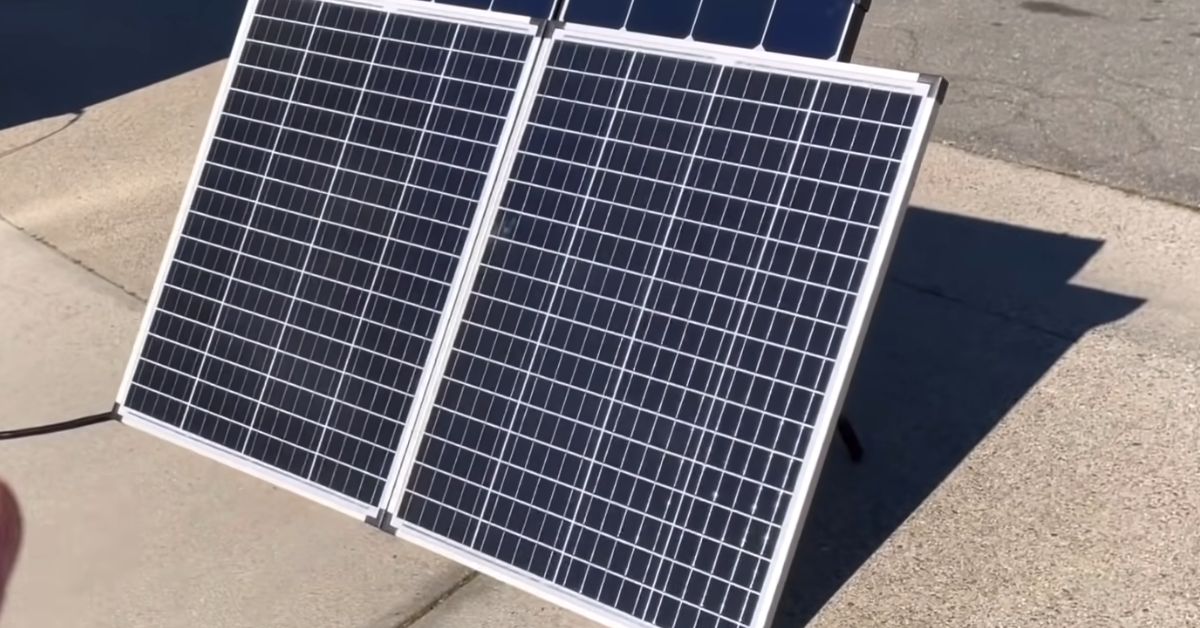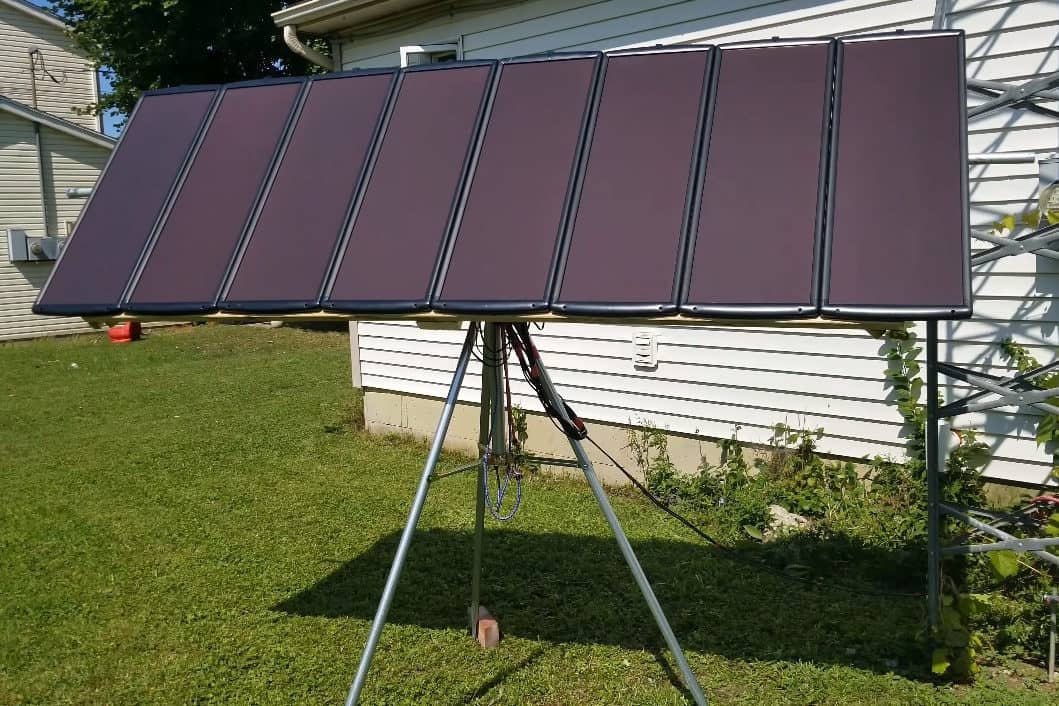Harbor Freight solar panels for shed – Harness the sun’s energy to power your shed with Harbor Freight solar panels, a cost-effective solution that offers energy independence and environmental sustainability.
Discover the types of solar panels available, installation considerations, system design principles, cost analysis, maintenance tips, and troubleshooting techniques to ensure your shed’s energy needs are met efficiently and affordably.
Introduction
Harbor Freight solar panels are an affordable and convenient way to power your shed. They are easy to install and can provide you with years of clean, renewable energy.
Using solar panels for your shed has many benefits. First, it can help you reduce your energy costs. Solar panels can generate electricity for free, so you can use them to offset the cost of your electricity bill. Second, solar panels can increase your energy independence. When you have solar panels, you are not reliant on the grid for your electricity. This can be especially beneficial if you live in an area where the grid is unreliable or expensive.
Types of Harbor Freight Solar Panels: Harbor Freight Solar Panels For Shed

Harbor Freight offers a range of solar panels suitable for various applications, including sheds. These panels come in different types, each with its own specifications and features.
The primary types of Harbor Freight solar panels are:
- Monocrystalline solar panels
- Polycrystalline solar panels
- Thin-film solar panels
Here’s a brief overview of each type:
Monocrystalline Solar Panels
Monocrystalline solar panels are made from a single crystal of silicon, giving them a uniform appearance. They are known for their high efficiency, typically ranging from 15% to 20%, and their long lifespan of 25 years or more.
Advantages of monocrystalline solar panels:
- High efficiency
- Long lifespan
- Durable construction
Disadvantages of monocrystalline solar panels:
- More expensive than other types
- Can be less efficient in low-light conditions
Polycrystalline Solar Panels
Polycrystalline solar panels are made from multiple crystals of silicon, resulting in a slightly less uniform appearance compared to monocrystalline panels. They offer a lower efficiency than monocrystalline panels, typically ranging from 13% to 16%, but are more affordable.
Advantages of polycrystalline solar panels:
- Lower cost than monocrystalline panels
- More efficient in low-light conditions
Disadvantages of polycrystalline solar panels:
- Lower efficiency than monocrystalline panels
- Shorter lifespan (around 20 years)
Thin-Film Solar Panels
Thin-film solar panels are made from a thin layer of photovoltaic material deposited on a substrate. They are lightweight and flexible, making them suitable for applications where space is limited or unconventional mounting is required.
Advantages of thin-film solar panels:
- Lightweight and flexible
- Less expensive than other types
- Can be installed on curved surfaces
Disadvantages of thin-film solar panels:
- Lower efficiency than monocrystalline and polycrystalline panels
- Shorter lifespan (around 10 years)
Recommendations for Sheds
For sheds, monocrystalline solar panels are generally the best choice due to their high efficiency and long lifespan. However, if budget is a concern, polycrystalline solar panels can also be a suitable option. Thin-film solar panels are not recommended for sheds due to their lower efficiency and shorter lifespan.
Installation Considerations

Installing Harbor Freight solar panels on a shed requires careful planning and attention to safety. Follow these steps to ensure a successful and safe installation:
Before beginning any work, check local building codes and obtain any necessary permits. Also, make sure to wear appropriate safety gear, including gloves, safety glasses, and a hard hat.
Mounting the Panels
Determine the best location for the solar panels on the shed, ensuring they will receive maximum sunlight throughout the day. Mark the mounting points and secure the panels using appropriate hardware, such as lag bolts or roofing screws. Ensure the panels are securely fastened and can withstand high winds.
Wiring the Panels
Connect the solar panels in series or parallel, depending on the desired voltage and current output. Use appropriate wiring and connectors, and make sure all connections are secure and weatherproof. Route the wiring neatly and protect it from damage.
Connecting to a Battery or Inverter
Connect the wired solar panels to a battery or inverter, depending on your power needs. If using a battery, ensure it is compatible with the solar panel system and has sufficient capacity to store the generated electricity. If using an inverter, ensure it is rated for the power output of the solar panels and can convert DC power to AC power.
When it comes to powering your shed with solar energy, Harbor Freight solar panels are a budget-friendly option. These panels come with a warranty that provides peace of mind, ensuring that your investment is protected. With their durable construction and efficient performance, Harbor Freight solar panels are an ideal choice for powering your shed and reducing your energy costs.
Safety Precautions
Always disconnect the solar panels from the battery or inverter before performing any maintenance or repairs. Use proper grounding techniques to prevent electrical shocks. Avoid touching live wires or terminals, and keep the system away from flammable materials.
System Design

Determining the size and configuration of a solar panel system for a shed involves calculating the energy needs of the shed and selecting the appropriate number and size of panels. Battery storage is also an important consideration, as it allows for the storage of excess energy generated during the day for use at night or during periods of low sunlight.
Calculating Energy Needs
- Identify the appliances and devices that will be used in the shed and their respective power consumption.
- Estimate the daily usage time for each appliance or device.
- Calculate the total daily energy consumption by multiplying the power consumption by the usage time for each appliance or device and summing the results.
Selecting Solar Panels
- Determine the total wattage required based on the daily energy consumption.
- Select solar panels with a combined wattage that meets or exceeds the total wattage required.
- Consider the available roof space and the efficiency of the solar panels when selecting the number and size of panels.
Battery Storage
- Determine the desired autonomy, which is the number of days the shed can operate without sunlight.
- Calculate the battery capacity required based on the total daily energy consumption and the desired autonomy.
- Select a battery bank with a capacity that meets or exceeds the calculated capacity.
Maintenance and Troubleshooting
Maintaining and troubleshooting your Harbor Freight solar panels is crucial to ensure their optimal performance and longevity. Regular inspections, cleaning, and timely repairs can prevent potential issues and keep your system running efficiently.
To maintain your solar panels, follow these steps:
Regular Inspections
- Inspect the panels for any physical damage, such as cracks, chips, or broken cells.
- Check the electrical connections to ensure they are secure and free of corrosion.
- Monitor the system’s performance using a solar monitoring system or by observing the energy production data.
Cleaning
- Clean the panels regularly to remove dirt, dust, and debris that can block sunlight and reduce efficiency.
- Use a soft cloth or sponge with a mild cleaning solution and water.
- Avoid using abrasive cleaners or harsh chemicals that can damage the panels.
Troubleshooting Common Problems, Harbor Freight solar panels for shed
- No power output: Check the electrical connections, fuse, and circuit breaker. Ensure the panels are receiving direct sunlight and are not shaded.
- Reduced power output: Inspect the panels for dirt or damage. Check the electrical connections and wiring for any loose or damaged components.
- Flickering or intermittent power: Tighten all electrical connections and inspect the wiring for any damage. Check for any loose or damaged components in the system.
Closing Notes
Transform your shed into a self-sufficient energy hub with Harbor Freight solar panels. Embrace sustainable living, reduce your energy bills, and enjoy the benefits of clean, renewable energy.
Key Questions Answered
What are the benefits of using solar panels for sheds?
Solar panels for sheds offer energy cost savings, increased energy independence, reduced environmental impact, and enhanced property value.
What types of Harbor Freight solar panels are available?
Harbor Freight offers various solar panel types, including monocrystalline, polycrystalline, and thin-film panels, each with unique efficiency levels and price points.
How do I install Harbor Freight solar panels on my shed?
Installing solar panels on a shed involves mounting the panels, wiring them together, and connecting them to a battery or inverter. Proper safety precautions should be followed.
How do I determine the size of a solar panel system for my shed?
System size depends on the shed’s energy needs. Calculate the energy consumption and select the appropriate number and size of panels to meet those requirements.
What is the estimated cost of installing a Harbor Freight solar panel system on a shed?
The cost varies based on the size and type of system, but typically ranges from a few hundred to a few thousand dollars. Consider the potential return on investment and payback period.


